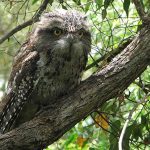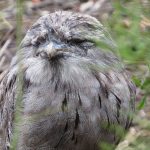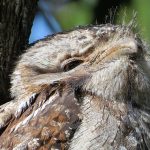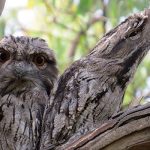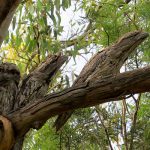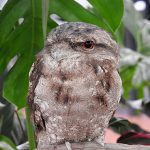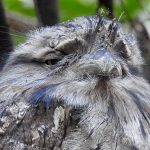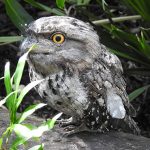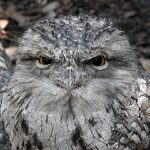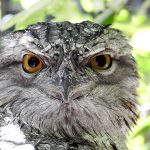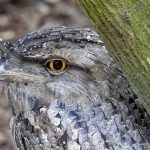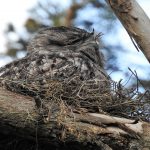TAWNY FROGMOUTH
Tawny Frogmouths are found throughout mainland Australia, including a wide range of habitats such as forests, woodlands, heathlands, and urban areas.
They have a mottled and cryptic plumage that resembles tree bark, making them excellent at camouflage. Their large, wide, frog-like mouths, inspired their name.
Despite some physical similarities to owls, Tawny Frogmouths are not owls; they belong to the family Podargidae.
Like owls, Tawny Frogmouths are primarily nocturnal birds, meaning they are most active at night. Their cryptic appearance helps them blend into their surroundings and avoid predators. They are silent hunters and feed primarily on insects, small mammals, and other small prey, which they capture with their sharp beaks.
Tawny Frogmouths have large, dark eyes adapted for low light conditions, which enable them to spot prey in the dark. They are territorial and may return to the same nesting site year after year. They construct flat, shallow nests made of sticks, typically in the fork of a tree branch.
Both the male and female share in incubating the eggs and caring for the young chicks. They are known for their strong parental bonds.
Tawny Frogmouths produce a variety of calls, including deep booming sounds and eerie, mournful calls that can be heard during the night. Their vocalizations are sometimes mistaken for the calls of owls.
Despite their adaptability to different environments, Tawny Frogmouths face threats such as habitat loss due to urban development and road traffic accidents.
Tawny Frogmouths are unique and fascinating birds known for their cryptic appearance, silent hunting techniques, and strong family bonds. They are a symbol of Australia’s diverse avian wildlife.

